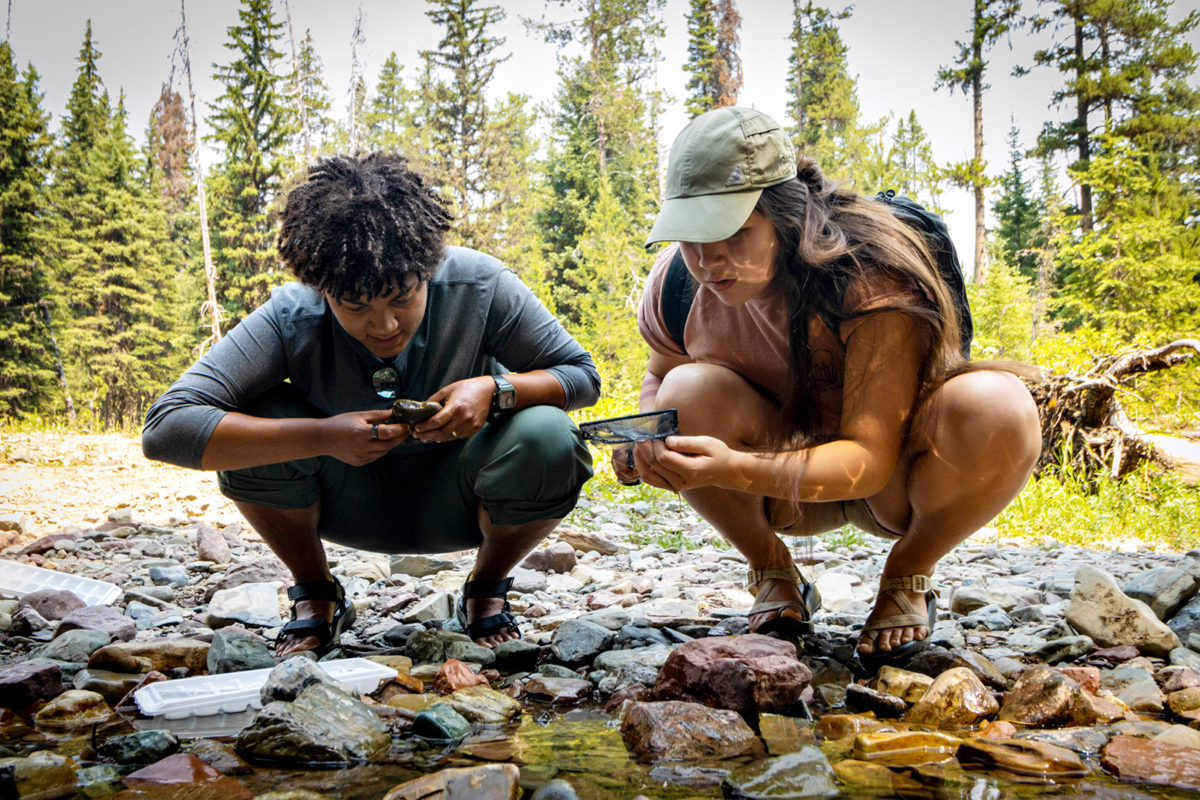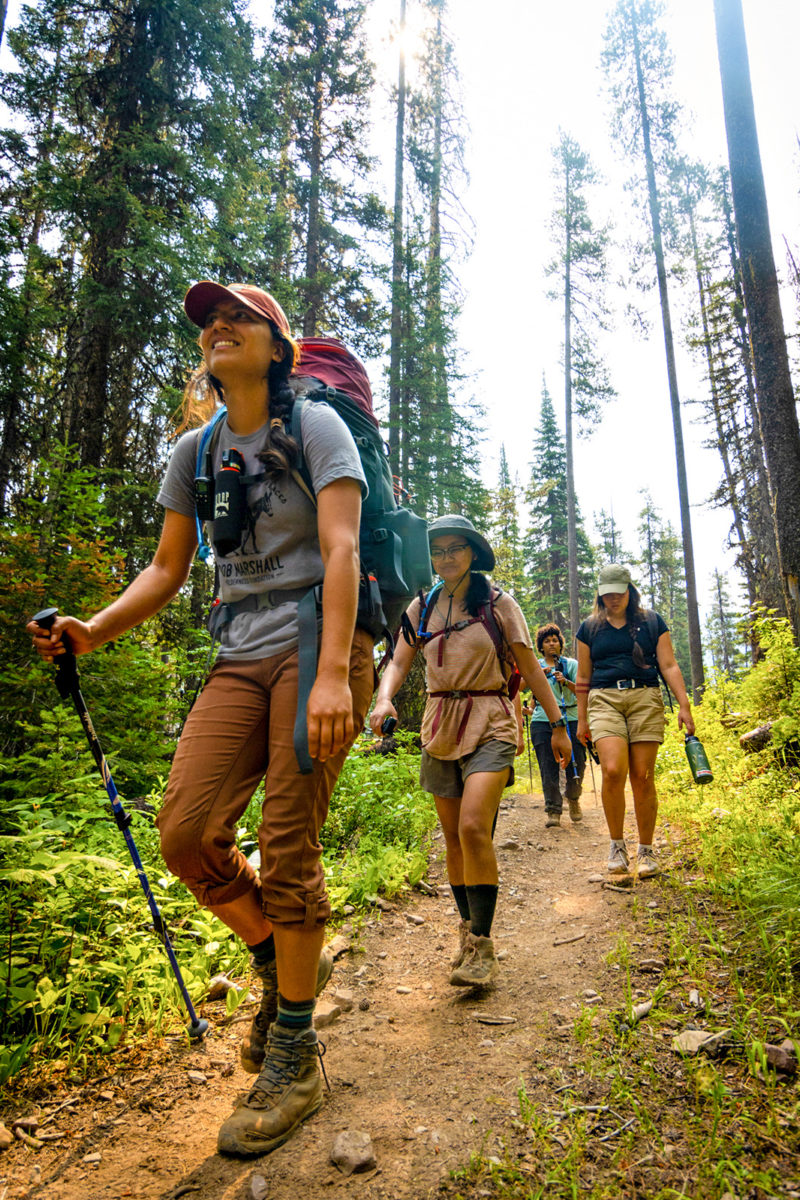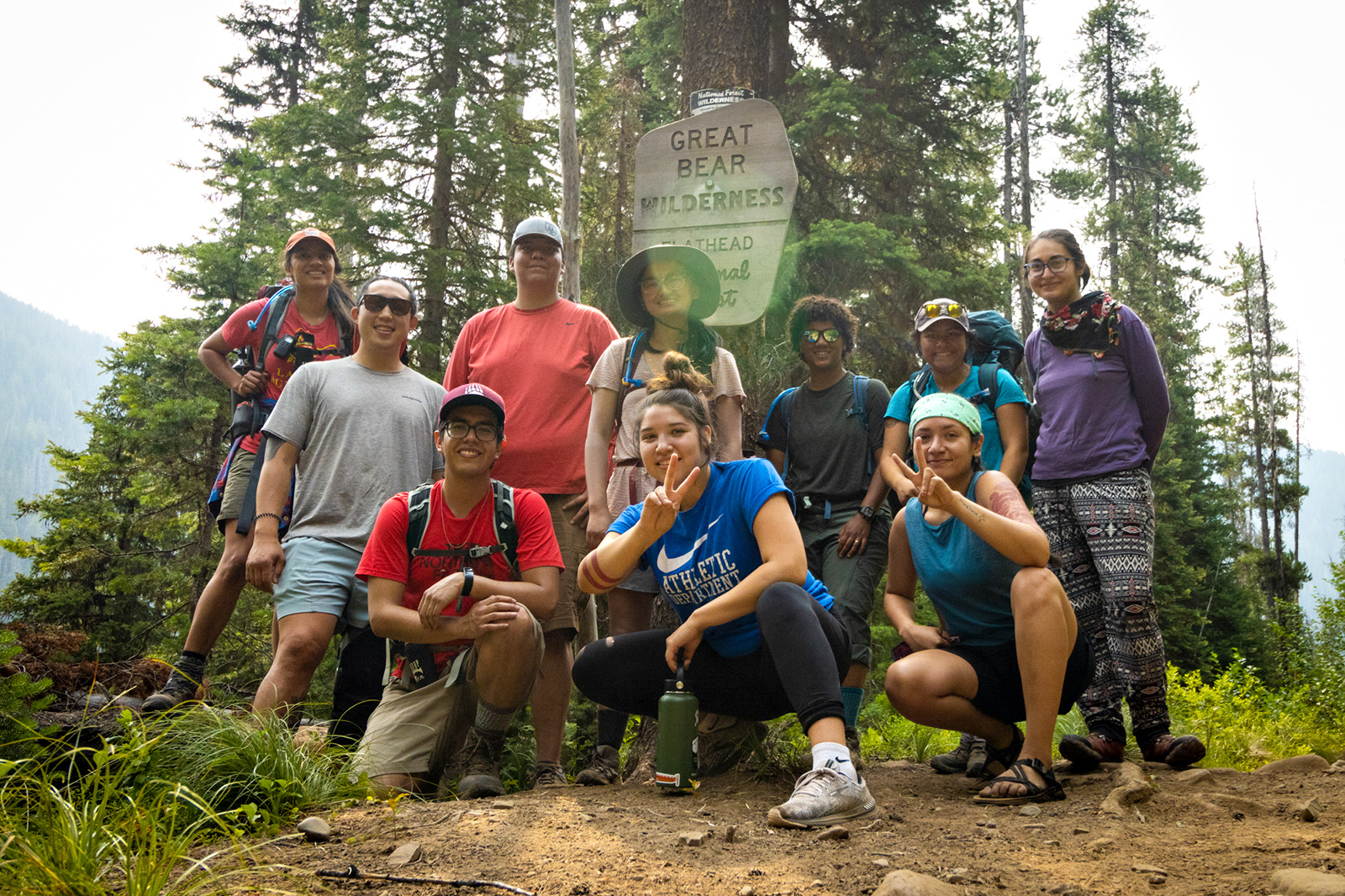The Bob Marshall Wilderness Foundation (BMWF) has long been known for its work with volunteers in the field opening trails and fighting off invasive weeds, but recently the organization has begun making efforts to further open access to the wilderness.
A new initiative called Wild Connections aims to make the outdoor community more representative and inclusive by working to remove barriers for those who do not typically see themselves as part of the traditional American public lands story, including Black, Indigenous, People of Color (BIPOC) and LGBTQ+ individuals.
“Our motto is, ‘Connecting People to Wild Places,’ and it’s important to us that this includes all people who want to experience wilderness,” said BMWF Program Director Rebecca Powell. “To do this, we need to start thinking about the barriers that exist for some — including access to the skills and knowledge needed to safely recreate in the backcountry. For those of us who were lucky enough to have friends or family members show us the ropes, it’s easy to forget that these connections are rare or don’t exist in every community.”
In July, BMWF partnered with Here Montana, a program run through the Missoula Parks and Recreation Department, to provide an introductory backpacking and stewardship experience for BIPOC individuals. Eight participants joined Powell, BMWF staff member Erynn Castellanos and Here Montana founder Alex Kim on a five-day trip into the Bob.
Throughout the trip, which started from the Granite Creek Trailhead, participants learned about native fish and the importance of Montana’s rivers, heard stories from the ancestral tribes of the area and learned about wilderness packing and stock use.

“For everybody, it was their first time in the Bob and I think their first time doing a trip that included meals and backcountry sites and pit toilets and the whole thing,” Kim said, noting that it was the first time he’d seen a backpacking expedition comprise mostly BIPOC individuals.
Here Montana and the Wild Connections program both aim to address recent research that shows that nearly 70% of users of public lands are white.
The participants for the trip came from across Montana and were screened through a questionnaire that focused on their prior outdoor experience as well as goals for the trip.
“I think often within the guiding industry you’re not always looking at that, you’re thinking, ‘Oh, they’ll pay me money and we’ll go to a river and catch a fish and send them home,’” Kim said. “But this was really different, and we were really thinking about how important this space is for native people, and making space and opportunities for people’s different identities so they feel comfortable and supported in their own journeys connecting to the space.”
Powell said that while BMWF has been known as a “moving dirt organization,” over the last few years it’s been an objective for the organization to find more ways to connect people to the wilderness and continue making the wilderness more accessible.
“Most of our volunteers are Montana residents, and they’re white, middle-class older folks, and that doesn’t really look like what America looks like,” Powell said. “So we realized we needed to train our staff and figure out how to remove some of the barriers for people to come to the Bob Marshall.”
Castellanos was recently hired by BMWF as the Education and Partnership Specialist specifically to focus on accessibility issues in the wilderness, and the recent backpacking trip was one of her first endeavors with the foundation.
“It was really awesome to see the initial first stage jitters of participants being really unsure of where to pitch a tent and how to get started in the morning, and then see them being 100% comfortable with where they were the next day,” Castellanos said. “We wanted to allow everyone to really explore their identities and abilities and figure out what their way of connecting to the wilderness would be like.”
“Overall, seeing how quickly they were able to embrace the space was really awesome.”

The Glacier Institute, Glacier National Park’s educational nonprofit partner, has also struggled with barriers leading backcountry trips for participants who aren’t able to afford the right equipment.
“We want to strengthen people’s connections to the natural world, but we find that with some of our tools for that, such as educational backpacking classes, people have a fear of not having the right gear,” said Glacier Institute Executive Director Anthony Nelson. “There’s really an economic barrier of not having the right stuff, or the highest end stuff.”
As a nonprofit, Nelson said that building their own stockpile of gear is hard, and what they do have to lend out is usually a conglomerate of equipment left behind on former trips.
That changed with a trip in early August, when the Glacier Institute partnered with Whitefish backpacking company RightOnTrek to fully outfit 24 youths with the gear and food for a four-day backcountry trip.
“To have this kind of partnership, being able to come out and say that you can take part in our programs and use the latest and coolest gear out there without buying it yourself is huge for really giving people access to the in depth backcountry experiences,” Nelson said. “The Crown of the Continent is really unparalleled, and everyone deserves to be able to experience it.”
